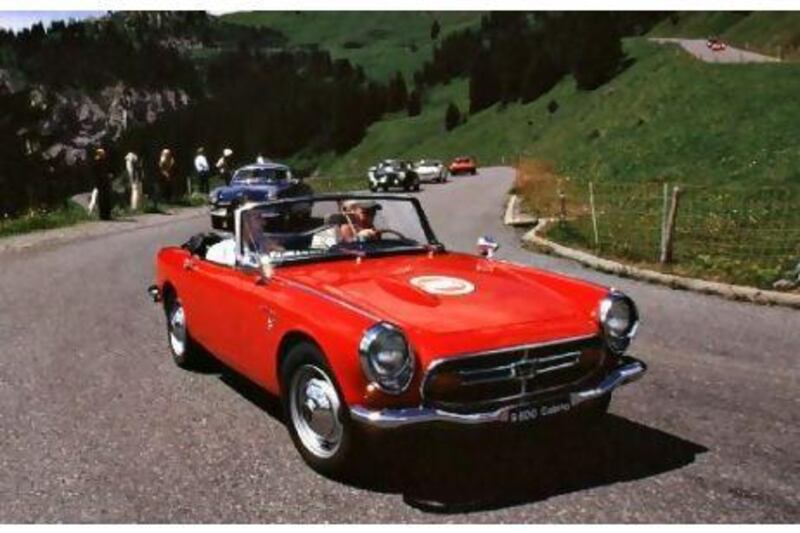Only two years after it produced its first car, Honda unveiled one of its most iconic models, the beautiful, bonsai, S800 sports car. Designed to benefit from Japanese tax breaks for small-capacity engines, it was a technological marvel, producing both class-leading performance and economy. Yet despite its clean lines and peerless efficiency, its production was abruptly halted in a cruel, ironic twist of fate, when the United States prohibited import after declaring it too "dirty".
Having worked for Toyota, Soichiro Honda founded his own company in the early 1960s. Such was his engineering talent that within five years the company was the largest manufacturer of motorcycles in the world. But the visionary designer saw an opening in the car market, too, and set himself the almost impossible task of creating a sports car within the tight constraints of the Japanese market. Restrictions on engine size put efficiency to the forefront and it was in rising to this challenge that Honda became a benchmark brand for efficiency.
Despite its tiny, 791cc engine, the S800 produced a remarkable 70hp and got to 100mph (160kph). To extract such power, the engine was very flexible and high revving, with an optimum performance at 8,000rpm and capable of accelerating to an astonishing 11,500rpm. This high power-to-capacity ratio was to become the hallmark of the company that is now the sixth-largest car manufacturer in the world.
With a smooth, sleek Italian design, the S800 was highly sought after and made its competitors, such as the MG Midget and Triumph Spitfire, seem dated and underpowered. It was available in both roadster and fixed-head coupe configurations. The roadster resembled a miniature version of the Bertone-designed Triumph TR4, while the coupe was similar to the English company's GT6 model.
Despite an excited reception at international launches, the model's success would be determined by its sales in the US market. Some cars had been exported home by servicemen who couldn't bear to leave their pocket-rockets behind. But as countless musicians have found, the US market is a difficult one to crack. The model had to be modified to comply with US safety regulations, adding to production costs. The original chain-driven configuration, a legacy of Honda's background in motorcycles, was replaced by a more orthodox live axle and disc brakes replaced drums. The market had been the prime catalyst for the model's development and yet, in a cruel twist of irony, it was never officially imported there.
The reason for this is shrouded in controversy. Officially import was prevented because of the S800's "dirty" engine, which the US ruled emitted too high a volume of unburnt hydrocarbons. On the face of it, this seems a very strange ruling as the model was undoubtedly one of the most efficient cars of its age, pioneering a level of efficiency 20 years ahead of its time. Indeed, a disgruntled owner recently put an S800 through an emissions test that proved it would have passed 1986 requirements. It is especially perplexing when its contemporary US-built rivals used less-powerful engines with three or four times the cubic capacity. This has led many to suggest that the S800's exclusion was an underhanded form of market protectionism to ensure US models didn't suffer at the hands of more modern, efficient competition from the east.
But failure to market the car in the United States sounded the death-knell for the model, and production ceased in 1970 with only 11,500 built. Despite its relative lack of commercial success, the S800 was a symbol of a resurgent Japan, and an early indication that the country possessed the innovation and engineering talent to dominate the global car market for decades to come.
The United States had sent Honda a clear message to clean up its act and, undeterred, that is exactly what it set about doing. The company spent the early 1970s developing a super-clean engine that would not only pass all emissions tests but provide the blueprint for efficient motoring. Honda's next model to hit the US market was the Civic, and almost 30 years later it is still in production.
Over the next few decades, Honda focused on family cars and developed into one of the most respected mass production brands in the world. But to usher in the new millennium it resurrected the 'S' brand, in the sleek and sporty S2000. As with its predecessor, this was fast and fuel efficient, matching the performance of competitors with engines of a much larger capacity.






